For many Singapore businesses — whether SMEs, law firms, property managers, telcos, medical clinics, or corporate finance teams — late payments and unpaid debts are more than a nuisance; they’re a direct threat to cash flow and financial stability.
While friendly reminders and payment plans can sometimes solve the problem, other cases require a formal, legal approach to debt recovery.
Understanding the legal process is essential for:
- Protecting your business’s financial interests
- Staying compliant with Singapore’s strict regulations
- Avoiding reputational damage
This article breaks down the step-by-step legal debt collector Singapore process, with examples, best practices, and tips for working with licensed debt collectors. Companies seeking both legal assurance and faster repayment frequently engage licensed agencies like Info Capital.
Step 1: Assess the Debt and Gather Documentation
Why It Matters
Before initiating any legal action, you must ensure the debt is valid, enforceable, and supported by proper documentation.
Essential Documents to Prepare
- Signed contracts or agreements
- Invoices and delivery orders
- Email or written communication proving the debt.
- Payment reminders have already been sent.
Example:
A Singapore SME in the IT sector prepared signed service contracts and invoice records before pursuing a legal claim, enabling a faster court process.
Step 2: Send a Letter of Demand (LOD)
What It Is
A Letter of Demand is a formal written notice sent to the debtor, stating:
- The amount owed
- The deadline for payment (usually 7–14 days)
- Your intention to take legal action if payment is not made
Singapore Legal Requirement
While not legally mandatory, courts often expect you to send an LOD before starting proceedings. It demonstrates you have given the debtor a fair chance to pay.
Tip: Engage a law firm or licensed debt collector to draft the LOD for maximum impact and legal accuracy.
Step 3: Choosing the Appropriate Legal Path
1. Small Claims Tribunal (SCT)
- For claims up to $20,000 (or $30,000 if both parties agree in writing)
- Covers specific disputes, such as rental arrears or unpaid goods/services
- Faster, cheaper, and more informal than court litigation
2. Magistrate’s Court & District Court
- Magistrate’s Court: Claims up to $60,000
- District Court: Claims between $60,001 and $250,000
3. High Court
- For claims above $250,000 or complex cases
Step 4: Filing a Claim
Process Overview
- Prepare a Statement of Claim (SOC) outlining the case
- File the SOC and supporting documents with the appropriate court.
- Serve the documents to the debtor according to the Rules of Court.
Singapore-Specific Insight
The eLitigation portal is used for most court filings, making the process more efficient but requiring accuracy in submission.
Step 5: Court Proceedings
If the Debtor Disputes the Claim
- The court will schedule a case conference and hearing
- Both parties present evidence and arguments.
- The judge decides on the outcome and issues a judgment.
If the Debtor Does Not Respond
- You may apply for a default judgment, which is legally enforceable.
Step 6: Enforcing the Judgment
Winning a judgment is only part of the process — you must still enforce it. In Singapore, common enforcement methods include:
1. Writ of Seizure and Sale (WSS)
Court-authorised seizure of the debtor’s assets to recover the debt.
2. Garnishee Proceedings
Directing third parties (e.g., the debtor’s bank) to pay you from funds held for the debtor.
3. Bankruptcy Proceedings
If the debt exceeds $15,000 and remains unpaid, you can apply to make the debtor bankrupt.
Singapore Laws You Must Follow in Debt Recovery
Protection from Harassment Act (POHA)
Prevents use of threats, intimidation, or harassment in debt recovery.
Personal Data Protection Act (PDPA)
Restricts how debtor information is collected, stored, and disclosed.
Contracts Act
Ensures agreements are legally binding and enforceable.
Compliance is crucial — violating these laws can lead to fines or lawsuits against your business. Lean More
Read more about: The Legal Process of Debt Recovery in Singapore Explained
Mini Case Study: Law Firm Debt Recovery Success
Background:
A mid-sized Singapore law firm had $75,000 in unpaid legal fees from a corporate client.
Approach:
- Sent an LOD drafted by a senior partner
- Filed a claim in the District Court when no payment was made
- Obtained a default judgment and enforced it via garnishee proceedings
Outcome:
Full recovery of debt within 3 months, plus partial legal costs reimbursed.
Advantages of Engaging a Licensed Debt Collector in Legal Recovery
- Experience with Singapore law and compliance requirements
- Can assist in pre-legal recovery efforts, reducing court involvement
- Often faster at locating debtors and negotiating settlements
- Helps maintain business reputation by using professional, lawful methods
Common Mistakes to Avoid in Legal Debt Recovery
- Starting legal action without clear documentation weakens your case.
- Delaying too long — debts become harder to recover over time.
- Ignoring legal compliance can result in counterclaims.
- Failing to budget for legal costs — plan ahead for filing fees and representation.
Read more about:
Checklist: Legal Debt Recovery in Singapore
- ✅ Verify debt validity and prepare documents
- ✅ Send a Letter of Demand
- ✅ Choose the right legal forum (SCT, Magistrate’s, District, or High Court)
- ✅ File the claim correctly via eLitigation
- ✅ Prepare for hearings or default judgment
- ✅ Enforce the judgment if necessary
- ✅ Engage licensed professionals when needed
Conclusion
The legal process of debt recovery Singapore is structured, efficient, and designed to protect both creditors and debtors. For businesses, knowing the right steps — from sending an LOD to enforcing a judgment — can mean the difference between writing off a loss and recovering your rightful payment.
Don’t let unpaid debts disrupt your cash flow. Info Capital specialises in lawful, effective Credit Collection tailored to Singapore businesses. Whether you need pre-legal negotiation or full legal action, our licensed experts can guide you every step of the way. Contact us today for a confidential consultation.
FAQs
What are the usual first steps a creditor should take before starting court proceedings?
Start with a written Letter of Demand and attempt negotiation or mediation. If those fail, consider issuing a statutory demand (for individuals) or preparing court proceedings appropriate to the debt size. A well-drafted letter often prompts repayment and is commonly required before escalation.
When should a creditor file a writ of summons or use the Small Claims / Court process?
Choose the forum by the amount and complexity. The Small Claims Tribunal handles smaller consumer and simple contract claims up to its monetary limit. For larger or contested claims, commence a civil action by filing a writ of summons or originating process in the appropriate court. Time limits and procedures depend on the Rules of Court.
What happens if the debtor does not respond to court papers?
If the defendant fails to file the required response or defence within the timelines, a creditor may apply for default judgment. Once judgment is entered, the creditor becomes a judgment creditor and can proceed to enforcement options.
What enforcement remedies are available after a judgment?
Common enforcement options include a Writ of Seizure and Sale to seize and sell assets, attachment of debts (garnishee/attachment orders) to recover money held by third parties, and bankruptcy or winding-up applications where statutory thresholds are met. Each remedy has its own procedures and restrictions.
How do a statutory demand and a bankruptcy petition work for unpaid debts?
A statutory demand is a formal demand for payment; if the debtor does not comply or apply to set it aside within the statutory period, the creditor may file a bankruptcy petition against an individual debtor if the debt meets the statutory minimum. Bankruptcy actions have important consequences and require careful compliance with rules.
Are there recent procedural changes I should be aware of when enforcing judgments?
Yes. Singapore consolidated some enforcement procedures under the newer Rules of Court, and attachment-of-debt procedures have been updated under the consolidated enforcement regime. Always check the current Rules of Court and Judiciary guidance before taking enforcement steps.


